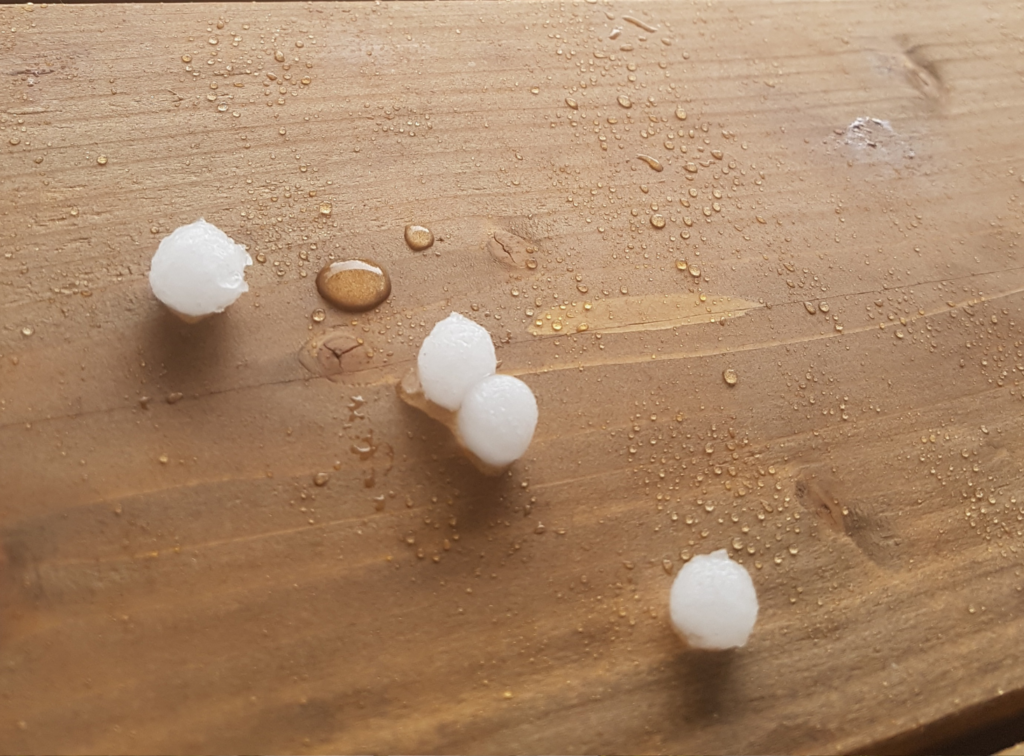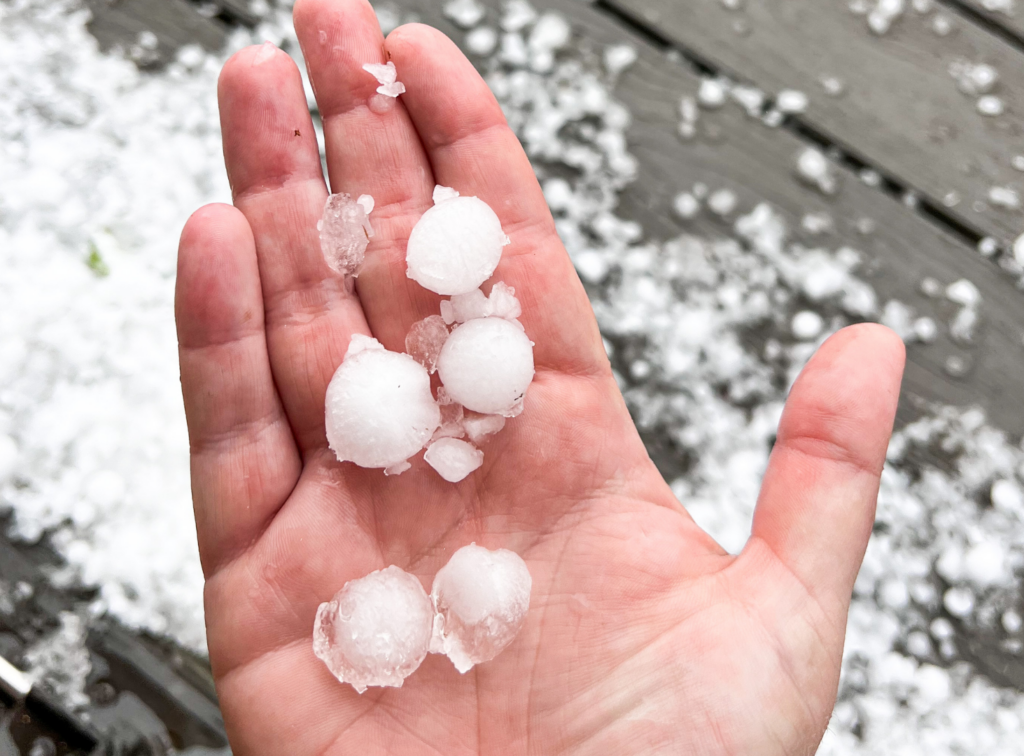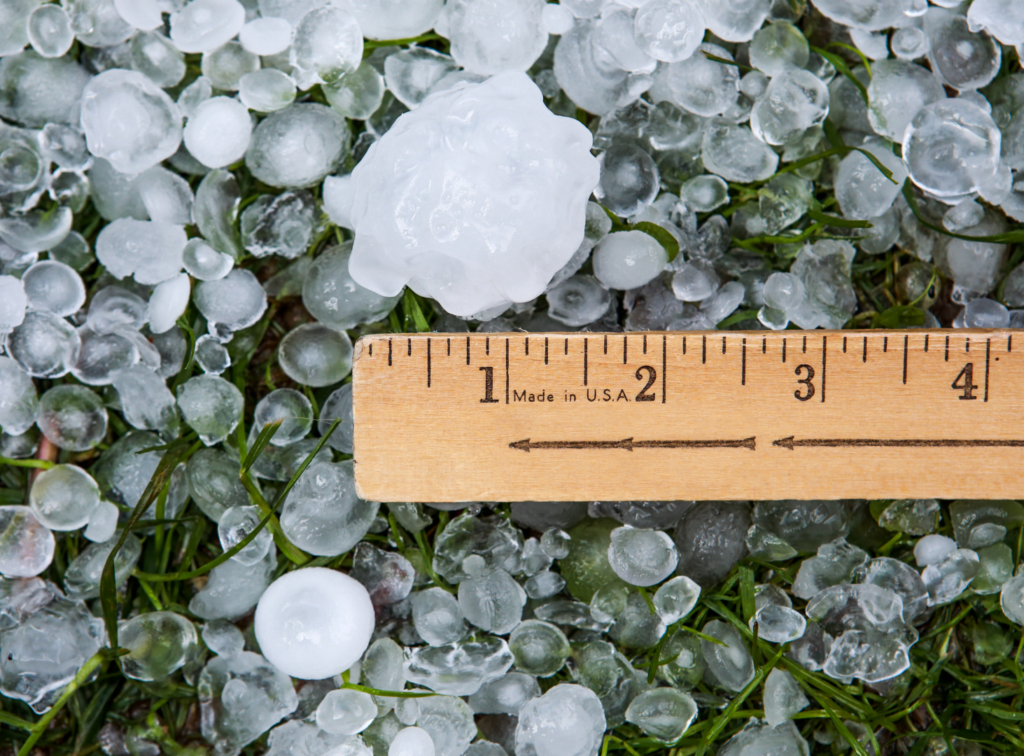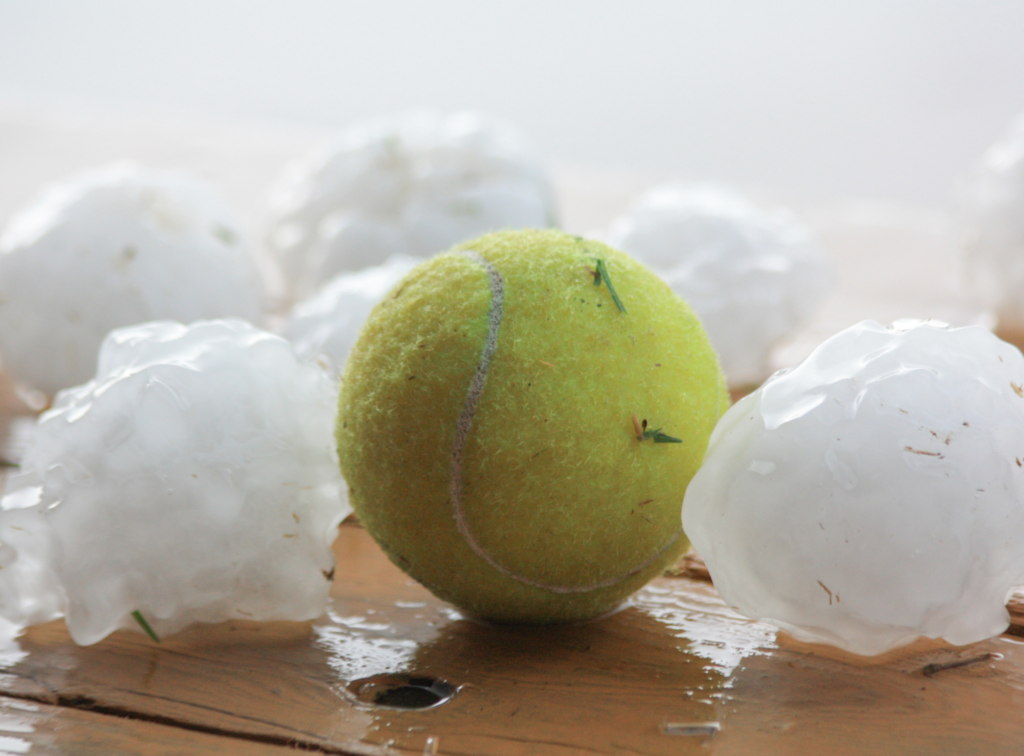When a hailstorm passes through, homeowners in Texas often hold their breath, wondering if their roof is safe. One of the most common questions we hear at Capital City Roofing is: “How big does hail need to be to damage a roof?”
The truth is, there’s no single magic number, but there is a widely accepted benchmark. While even small hailstones can sometimes cause damage, a good rule of thumb is that hail typically needs to be at least one inch in diameter—about the size of a quarter—to cause significant harm to a standard asphalt shingle roof.
However, the size of the hail is only one piece of the puzzle. Several other crucial factors can determine the extent of the damage.
Not all roofs are created equal. The type of material on your home determines how much damage hail can do:




| Hail Size | Damage to Asphalt Shingles | Damage to Metal Roofing | Damage to Tile Roofs |
|---|---|---|---|
| < 1" (Pea-Sized) | Rare; may dislodge granules | Usually none | Minimal to none |
| 1" - 1.25" (Quarter) | Bruising, granule loss | Dents possible | Minor cracks |
| 1.5" - 2" (Golf Ball) | Cracks, punctures | Dents, coating damage | Cracks or broken tiles |
| > 2" (Tennis Ball+) | Severe; likely replacement needed | Heavy denting, structural issues | Significant cracking and leaks |
Hail size isn’t the only factor to consider. Three more variables play a big role:
Pro Tip: Even if your neighbor’s roof looks fine, yours might have taken more damage depending on slope, age, and material type. Always get a professional inspection to be sure.
Hail damage isn’t always obvious to the untrained eye. Even if you don’t see massive dents, damage could be present. After a storm, it’s wise to look for these signs from the ground:
“See what hail damage looks like on a roof” is one of the most common homeowner questions we hear.
Austin is no stranger to hail. The region experiences frequent hail events, especially in spring and early summer. What makes Austin unique?
If your zip code is in Travis or Williamson County, you’re statistically at risk.
If you suspect your home has been hit by hail, it’s essential to take the right steps to protect your property and streamline any potential insurance claim.
For a professional, comprehensive assessment of hail damage to your home, trust the experts at Capital City Roofing. Our team has the experience and expertise to identify even subtle damage and guide you through the repair or replacement process. We’re here to help you protect your biggest investment.
Helpful Tip: Many insurers require a contractor’s report before approving your claim.
Your roof is your first line of defense. If you suspect damage or want peace of mind, contact the leading hail damage roofing contractors in Austin for a free inspection.
Don’t wait until leaks start – book your FREE roof inspection today.
Look for bruised or missing shingles, dented flashing, granule loss, or exposed fiberglass. Professional inspectors use tools to identify less obvious issues like soft spots or water infiltration.
Yes. Quarter-sized (1") hail is the threshold where asphalt shingles can start to show bruising, cracking, or granule loss, especially if the shingles are older.
Typically no. Hail smaller than 1 inch rarely causes damage to roofing materials, though it may still affect soft metals like gutters or window screens.
Penny-sized hail (around 0.75") can cause very minor damage but is unlikely to affect roofing unless combined with high wind speeds or falling on an aging roof.
Yes! We handle everything from detailed documentation to meeting with your insurance adjuster. Our goal is to make the claims process easy and help you get the maximum coverage you’re entitled to—with zero pressure and full transparency.
Phone: (512) 844 – 9598
© 2024. Capital City Roofing